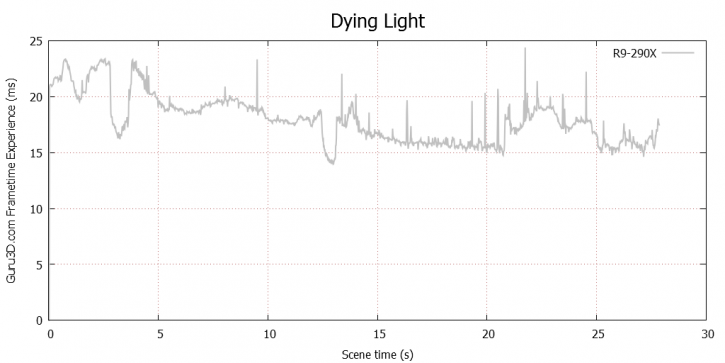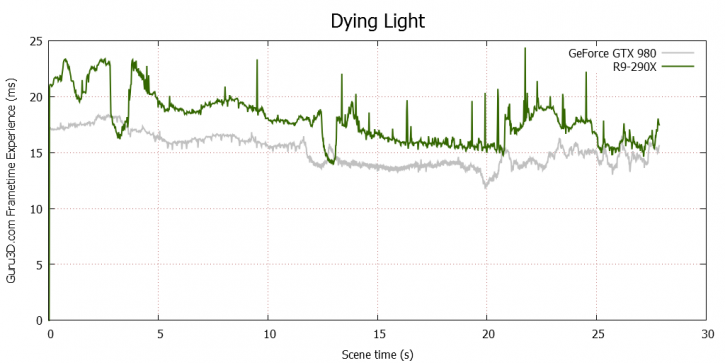FCAT Frametime Recording Single GPU
Frametime Recording GeForce GTX 980 & Radeon R9 290X
With a benchmark technology called FCAT on the following two pages, we will look into Frame Experience Analysis. Basically with the charts shown we are trying to show you graphics anomalies like stutters and glitches in a plotted chart. Lately there has been a new measurement introduced, latency measurements. Basically it is the opposite of FPS.
- FPS mostly measures performance, the number of frames rendered per passing second.
- Frametime AKA Frame Experience recordings mostly measures and exposes anomalies - here we look at how long it takes to render one frame. Measure that chronologically and you can see anomalies like peaks and dips in a plotted chart, indicating something could be off.
| Frame time in milliseconds |
FPS |
| 8.3 | 120 |
| 15 | 66 |
| 20 | 50 |
| 25 | 40 |
| 30 | 33 |
| 50 | 20 |
| 70 | 14 |
We have a detailed article (read here) on the new FCAT methodology used, and it also explains why we do not use FRAPS anymore. Frametime - Basically the time it takes to render one frame can be monitored and tagged with a number, this is latency. One frame can take say 17 ms. Higher latency can indicate a slow framerate, and weird latency spikes indicate a stutter, jitter, twitches; basically anomalies that are visible on your monitor.
What Do These Measurements Show?
Basically, what these measurements show are anomalies like small glitches and stutters that you can sometimes (and please do read that well, sometimes) see on screen. Below I'd like to run through a couple of titles with you. Bear in mind that Average FPS matters more than frametime measurements. It's just an additional page or two of information that from now on we'll be serving you.
Frame Pacing Enhancements Single GPU
Above a frame-time recording of the internal benchmark @ 2560x1440 performed with a single GeForce GTX 980. So the light grey line is the test-run. The benchmark is time based, meaning the quicker it finishes, the faster the card. The GeForce GTX 980 is showing smooth performance without any stutters.
Let's have a look at the AMD Radeon R9 290X. As you can see if you compare with the GeForce GTX 980, the resul is close to similar, however we do see more smaller spikes. These are below 25ms though, thus not visible.
When we layer the two cards then you can see very decent frametimes without serious enough anomalies. On the next page we'll address multi-GPU solutions in terms of Crossfire and SLI.




